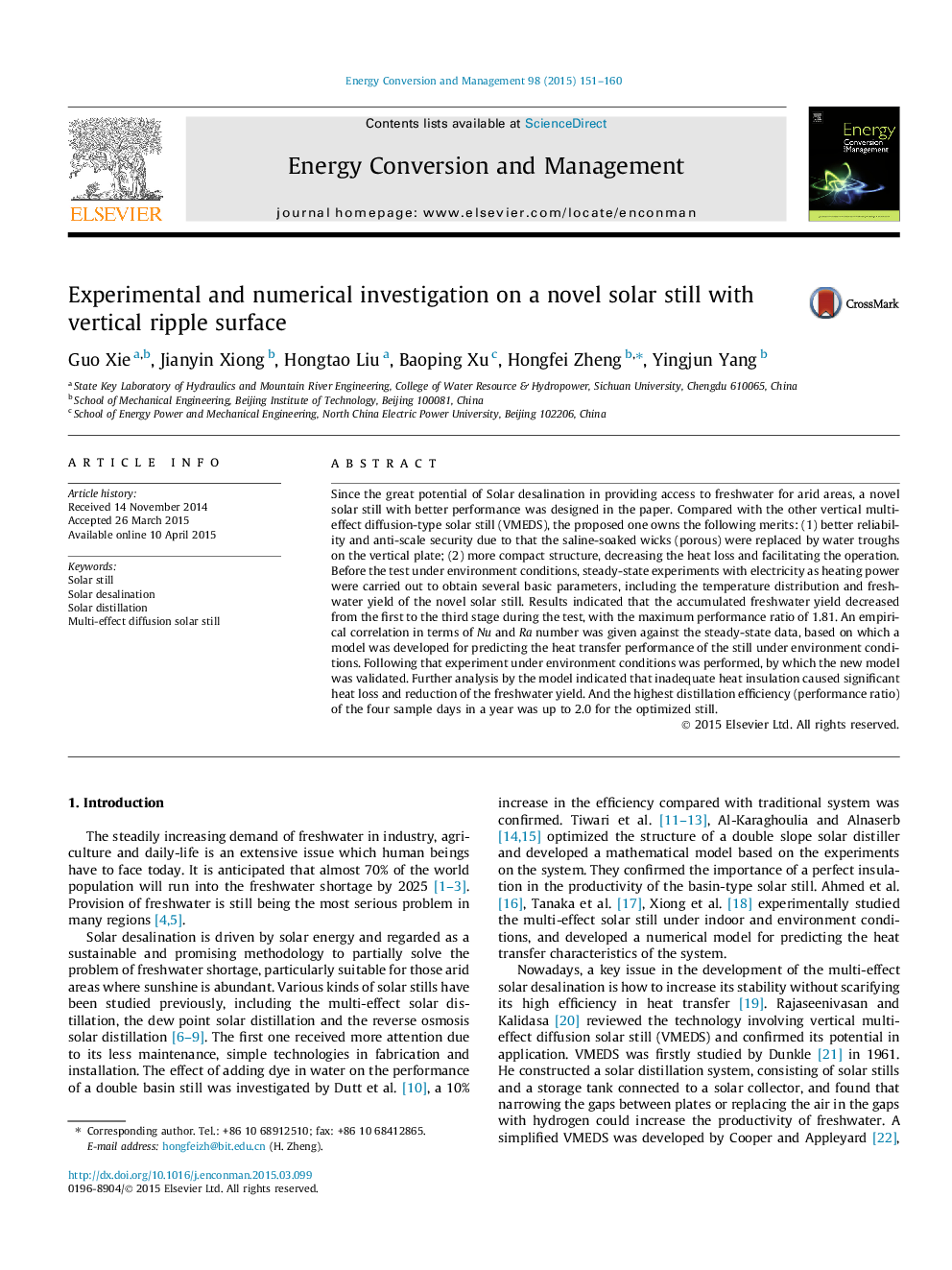| Article ID | Journal | Published Year | Pages | File Type |
|---|---|---|---|---|
| 763751 | Energy Conversion and Management | 2015 | 10 Pages |
•A novel diffusion-type solar still was designed to improve the stability.•Basic parameters were obtained by the steady-state experiments.•An empirical correlation for the corrugated distillation cavity has been given.•The performance of the still under environment conditions was investigated.
Since the great potential of Solar desalination in providing access to freshwater for arid areas, a novel solar still with better performance was designed in the paper. Compared with the other vertical multi-effect diffusion-type solar still (VMEDS), the proposed one owns the following merits: (1) better reliability and anti-scale security due to that the saline-soaked wicks (porous) were replaced by water troughs on the vertical plate; (2) more compact structure, decreasing the heat loss and facilitating the operation. Before the test under environment conditions, steady-state experiments with electricity as heating power were carried out to obtain several basic parameters, including the temperature distribution and freshwater yield of the novel solar still. Results indicated that the accumulated freshwater yield decreased from the first to the third stage during the test, with the maximum performance ratio of 1.81. An empirical correlation in terms of Nu and Ra number was given against the steady-state data, based on which a model was developed for predicting the heat transfer performance of the still under environment conditions. Following that experiment under environment conditions was performed, by which the new model was validated. Further analysis by the model indicated that inadequate heat insulation caused significant heat loss and reduction of the freshwater yield. And the highest distillation efficiency (performance ratio) of the four sample days in a year was up to 2.0 for the optimized still.
